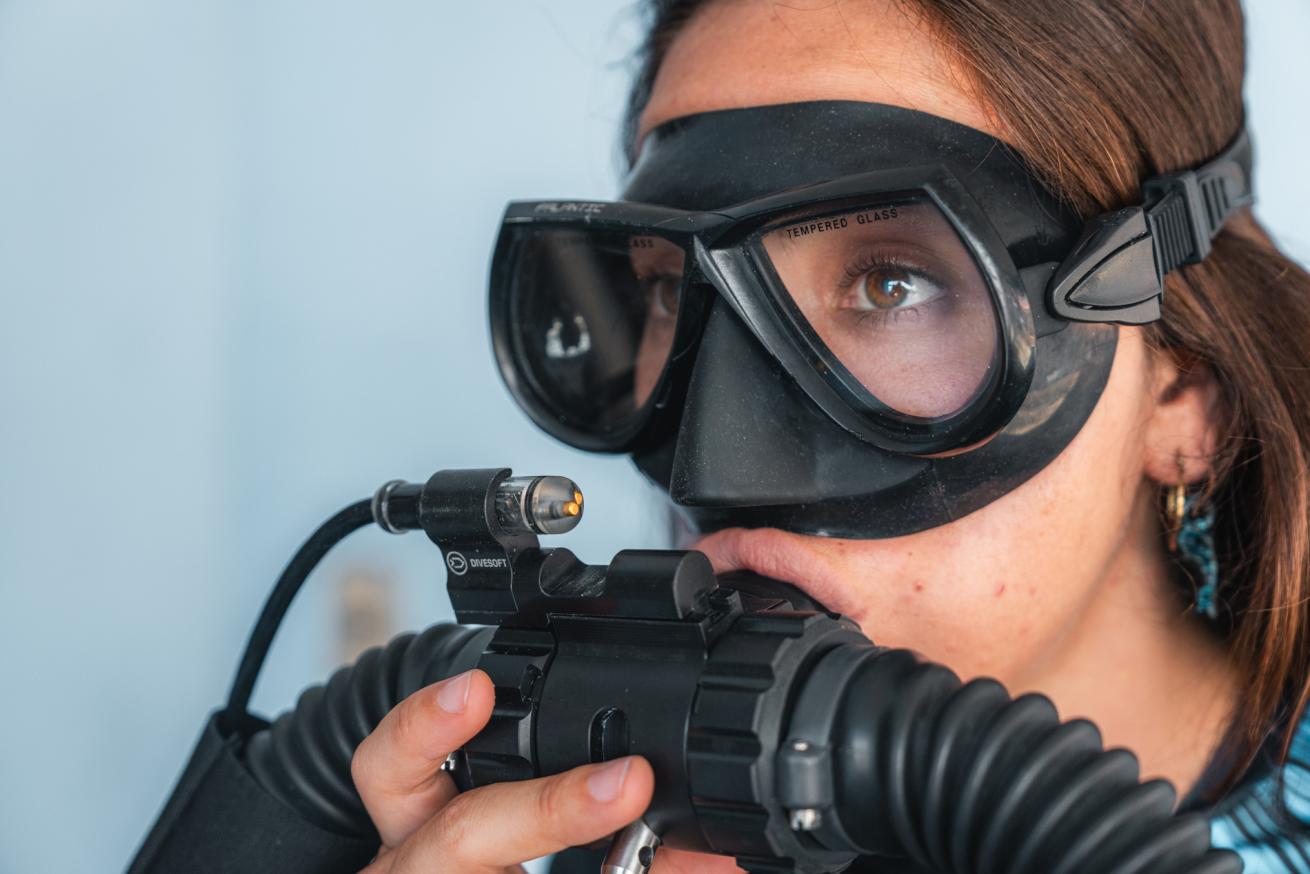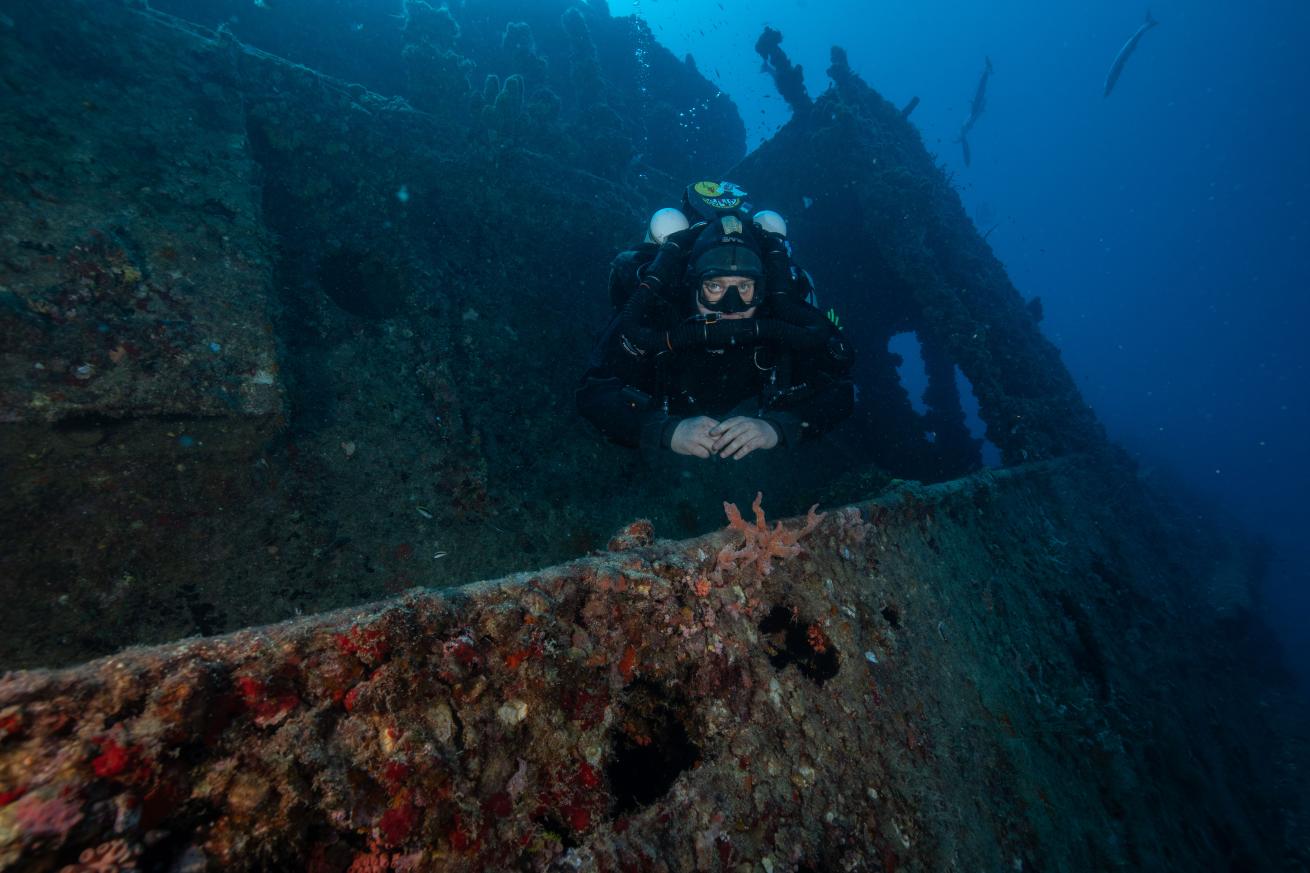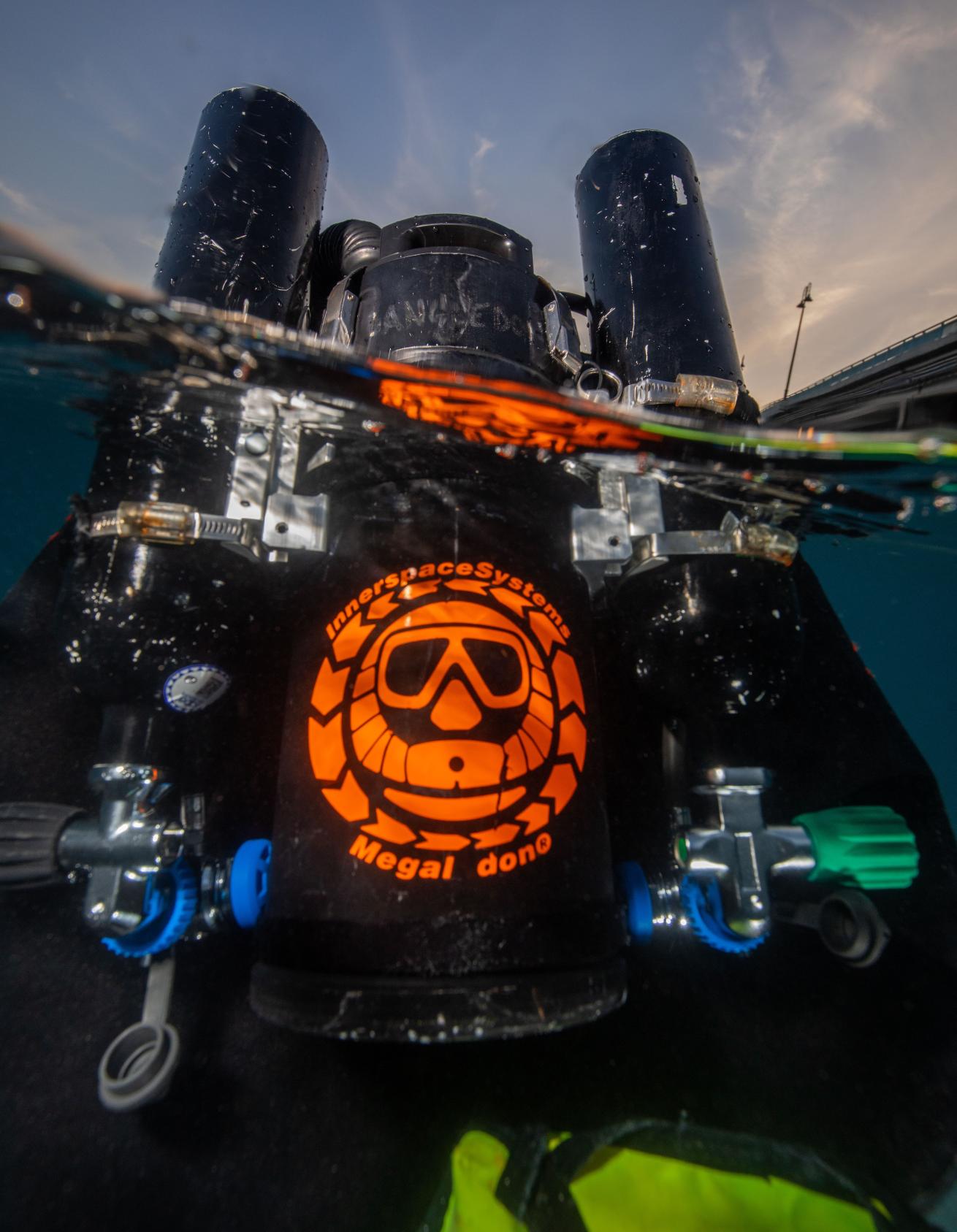Rebreathers 101

Jay ClueRebreathers have revolutionized underwater exploration
Rebreathers have long been touted by the underwater exploration and filmmaking communities as one of the best inventions in diving for the additional freedoms they offer. Once reserved for very specific niches, rebreathers have become more commonly used throughout diving. If you’re like me, that might have you wondering what all the fuss is about. In this month's edition of Exploring Rebreathers, I take a real-life approach and look at how switching to a closed-circuit rebreather (CCR) might affect your diving, travel, logistics and, of course, your wallet.
Extended Dive Times
One of the major advantages of diving a rebreather is being able to spend more time underwater. Since closed-circuit rebreathers essentially recycle the gas you breathe, this means the only gasses spent are just what your body metabolizes or what is released into the water from actions like clearing your mask.
Additionally, unlike open circuit scuba, your gas consumption on a dive does not increase the deeper you go. For example, last week I did a 100-minute multilevel dive on my Dive Rite O2ptima CM rebreather to a max depth of 130 feet/40 meters. At the end of the dive, my 80 cubic foot air diluent cylinder still had roughly 2800 PSI/180 bar, and my 13 cf onboard oxygen cylinder had about 1500 PSI/100 bar still available. That’s a tiny amount of gas being used for a longer, deeper dive.

Jay ClueRecently, on a 66 foot/20 meter dive in Cabo Pulmo, divers on open circuit began their ascent after a 35-minute dive as they were approaching decompression limits. As you can see, my no decompression limit (NDL) on my handset read 90 minutes of NDL time available.
On top of their gas efficiency, rebreathers are also like having an enriched air nitrox-blending station with you throughout the entire dive. The rebreather works by giving you the ideal gas mix for any given depth—with an eCCR there is even an onboard computer system that helps do this for you. On the recreational side, this gives you the ability to do much longer dives without needing decompression.
On the technical side, it allows you to better optimize your decompression and reduce your deco stops when compared to open-circuit diving. These benefits translate to being able to enjoy much longer dives, and they also give you more time to work through problems underwater, which could be beneficial in an emergency.
Incredible Encounters
One of my favorite things about diving on a rebreather is how silent they are and how marine life responds as a result. Since there are no bubbles or high-pressure gas blasts from the regulator, dives are incredibly quiet. Fish seem more curious and less nervous, making the encounters even more special. The other day, a small porcupine fish decided it wanted to be my pilot fish for a chunk of the dive, alternating between hiding under the loop and swimming up to look in my mask, to saying hello every time I’d stop swimming. Or maybe it was asking if I needed directions.
Related Reading: What it’s like to have an insane animal encounter on a rebreather
Dive Comfort
One of the peculiarities I found interesting while learning to dive CCR is how something as simple as the moisture or temperature of the gas you breathe can affect your dive. Due to the way closed-circuit rebreathers function, the gas is warmer and less dry than with open-circuit scuba.
This means your body doesn’t need to generate as much heat to offset breathing cool gas, which can translate to not getting cold as fast underwater. The gas in the loop also stays humid, which helps to reduce dehydration during the dive.

Kristin PaterakisA diver explores a shipwreck in a backmount rebreather
In terms of what it feels like to dive a rebreather, depending on your model and style the unit could feel similar underwater or maybe a bit bulkier than a standard back-mount scuba rig. Rebreathers can also be larger, in a sidemount configuration or even chest mount–there are quite a few different styles of rebreathers. Either way, from the beginning it's going to feel strange and take some getting used to. For example, I feel slightly more agile when shooting photos in my open circuit scuba rig than in my rebreather; the tradeoff is I get better interactions with wildlife on the rebreather.
Travel and Logistics
Depending on the type of diving you enjoy, this is where using a rebreather could get a little trickier. If you’re into diving near your home, you’ll want to see if your local shop can provide oxygen fills and “sorb,” the chemical absorbent that removes carbon dioxide as your breathing gas is recycled. If you dive in exotic places, you need to do a little more research when planning a rebreather trip. While rebreather divers could travel with their own absorbent, adding extra weight to their luggage is not ideal. Plus, not all shops are equipped to fill pure oxygen cylinders even if they bring their own sorb.
While there are a few dive centers and liveaboards around the world that support rebreather diving, they’re not as common–especially when looking at the more remote destinations. On the other hand, this usually means the dive center or liveaboard you choose is familiar with CCR and getting rebreather divers the best experience in their local area.
Imagine the thresher sharks of Malapascua coming in super close, or the walls of shy hammerheads at Socorro cruising right alongside you.
From a packing point of view, the unit you choose will ultimately decide how easy it is to prepare for trips. This was a massive factor in my decision-making process because I travel a lot for work. One reason I chose the CCR that I dive is that I can break it down quickly and fit it into a backpack.
In terms of getting ready for a dive, rebreathers do take extra time to set up and aren’t something you want to rush putting together because you woke up late. If you're going to dive a rebreather, you need to be disciplined in using and following checklists. This is because they are more complex in setup, operation and post-dive maintenance than open-circuit scuba. I set up my system the night before and test everything works correctly the next morning. After you’re finished diving, you’ll also need extra time to break everything down and clean the system, but many systems can give you a full day of diving without needing to refill tanks or change sorb, etc.–meaning you can just relax and catch some sunshine on your surface intervals.

Kristin PaterakisAn ISC Megladon closed-circuit rebreather
Rebreather Training
Ask any CCR diver and they’ll most likely tell you the first days of their rebreather course felt like they were learning to dive all over again. A lot of this comes down to how the buoyancy in CCR differs from scuba. When learning open circuit scuba, we are taught that our breathing affects buoyancy and how we can use that to better control our buoyancy underwater.
This is because our lungs change volume as we inhale and exhale, which in turn changes our buoyancy. But with a CCR, a counterlung–a specialized breathing bag–contracts when we inhale and expands when we exhale. This means our volume doesn’t change and neither does our buoyancy. So, we can’t use breathing to fine-tune our buoyancy.
You’ll learn to focus on using your BCD and low-pressure inflator to adjust buoyancy. It sounds minor, but your open-circuit habits will make training a bit confusing in the beginning. Closed-circuit rebreather courses are in depth and can take five or more days to complete. This is a good thing because it gives you more time on the unit, learning and practicing with an experienced instructor.
A caveat with rebreather courses is they are model-specific. When we complete our open water diver course, we are certified to dive essentially in any configuration similar to what we trained on – so, whether I purchased a SCUBAPRO or Aqualung rig after the course didn’t really matter.
With rebreathers, the training and certification are specific to the unit you learn on. For example, I am certified to use the O2ptima CM. If I want to switch to a Divesoft Liberty, I would need to take a crossover class to learn how to use that specific model. While we might see this as needing to spend more time or money, it is beneficial because rebreathers can be quite different from one model to the next.
Related Reading: My Introduction to Diving a Rebreather
Costs and Budgeting
Mention rebreathers to a group of divers and you can expect at least one to comment that they’re too expensive. It’s understandable, as units vary in price from $4,000 to upwards of over $12,000, with most systems falling somewhere in the $6,000-$9,000 range–that’s roughly more than double the cost of a high-end traditional recreational system.
Annual maintenance costs are also going to be a bit higher than servicing your regular gear. But if we dig into the numbers, we can then calculate the savings in gas fills and such, which can be significant, especially in technical diving.
However, to truly decide if a rebreather is right for you, you must quantify the unquantifiable. With a rebreather, you are essentially buying a way to take an activity you love to another level and make it even more amazing.
Whether or not the benefits justify the cost will really come down to your individual wants or needs. For me, spending a longer time underwater and having extraordinarily intimate encounters with the remarkable creatures is something I struggle to put a price on.

Cecilia Mar RuizJay Clue
Exploring Rebreathers is a monthly column following Jay’s journey into the world of CCR diving, sharing the best tips and info he has learned along the way. Jay Clue is an accomplished photographer, educator, and conservationist. He’s an experienced technical diver and instructor with more than 6,000 dives in all types of environments, from the cold waters of the North Sea to the beautiful caves of Mexico and exploring the open oceans in search of epic encounters with marine megafauna. His passion for marine conservation led him to the world of photography and storytelling in hopes of bringing the beauty of our planet's waterways to more people around the globe. Follow him at @jayclue on Facebook and Instagram, where he’s always happy to answer your questions and chat about diving.










